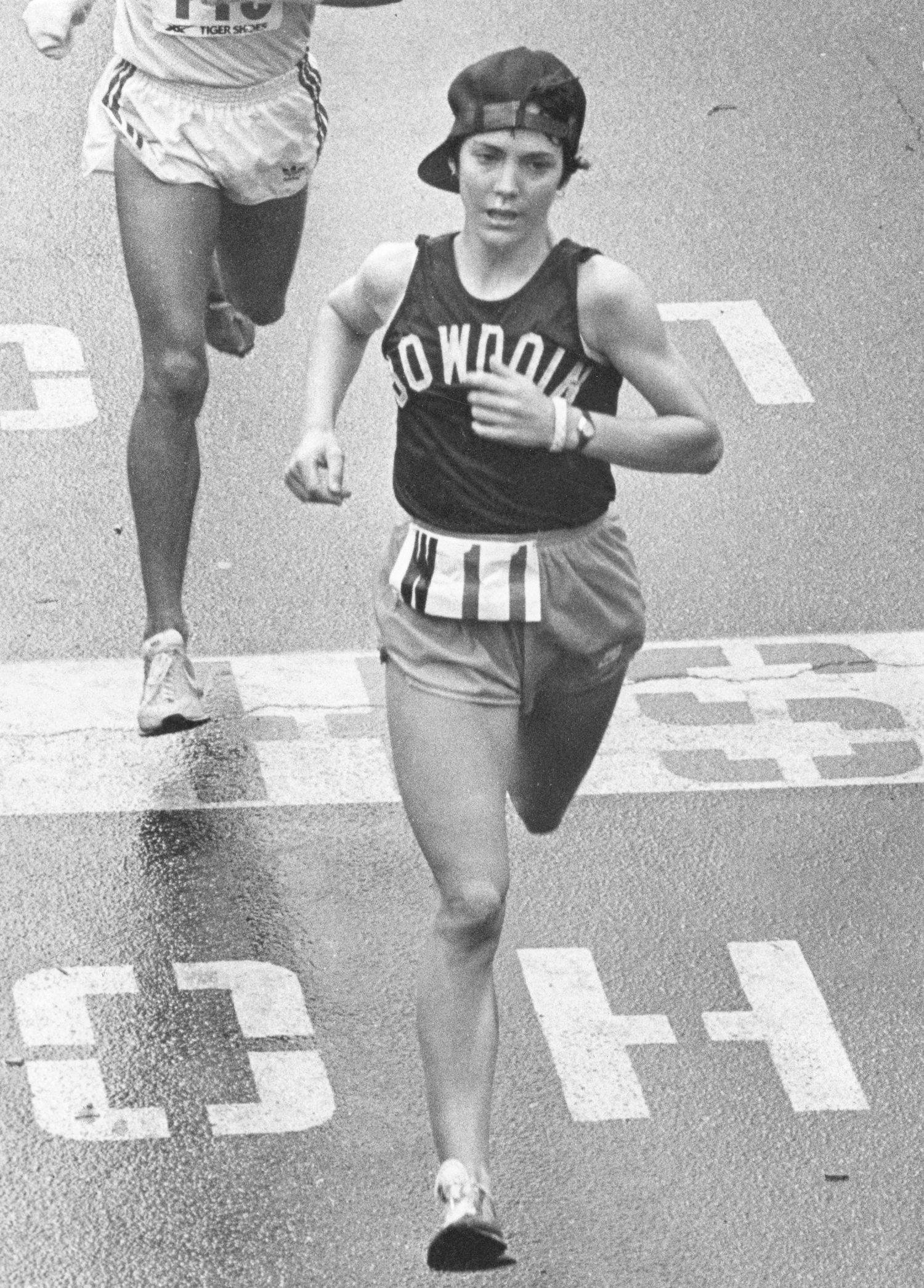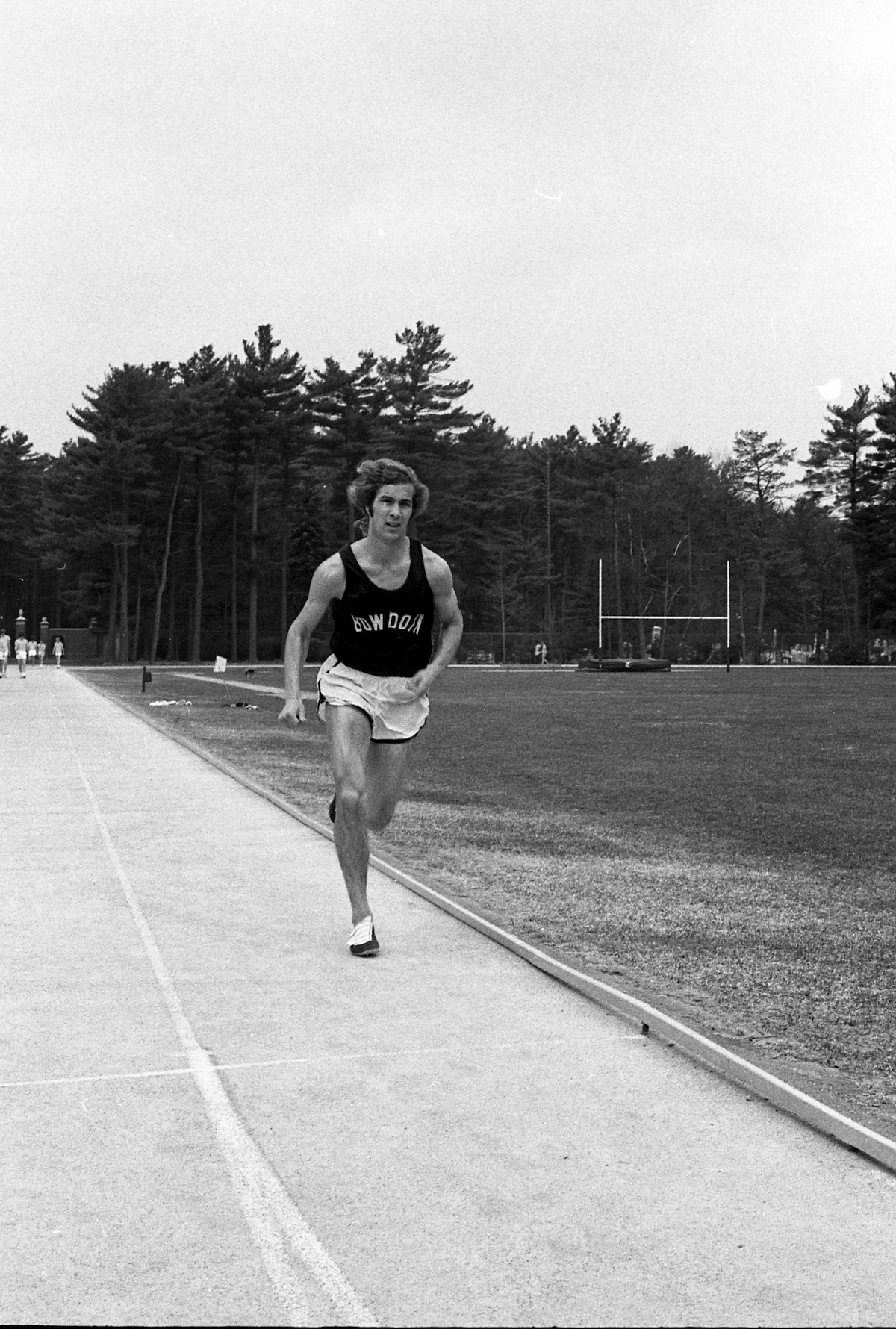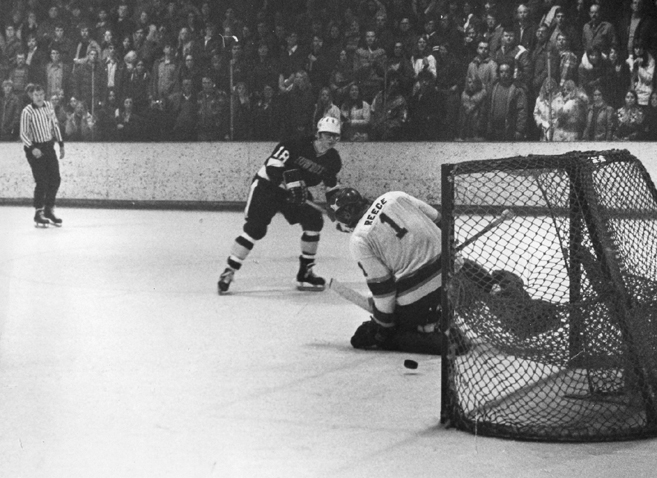Bowdoin athletics department faced co-education and budget cuts in the 1970s
February 19, 2021
 Courtesy of The Boston Globe
Courtesy of The Boston GlobeIn 1971, the College’s Board of Trustees and the President at the time, Roger Howell Jr., officially ruled in favor of co-education and accepted Bowdoin’s first class of women. Adding to an already vibrant and successful sports culture, the introduction and development of women’s sports teams followed soon after.
The Board of Trustees’ decision brought much hope and optimism, but also an air of confusion and concern, to what was then an all-male student body and athletic department.
The learning curve, at first, was steep. In 1971, field hockey was introduced as the first women’s sport. Coached by Sally Lapointe, the informal club team initially had only six players and competed against local high schools. Ms. Lapointe was unpaid, and Bowdoin was hesitant to allocate any funds to the women’s athletic department, despite many requests.
“We didn’t run out and buy a bushel barrel of field hockey sticks,” Dean Nyhus, Dean of Students at the time, said in Volume CI, Issue 9 of the Orient.
However, in 1972, conditions for female athletes began to slowly improve due to the implementation of Title IX, which required women to be provided with equal educational and athletic opportunities. The College offered women’s varsity tennis, squash and skiing, as well as club field hockey. Female athletes began receiving uniforms and other gear such as sweatpants and jackets.
In a president’s report from 1975, Howell moved to hire more female coaches for women’s teams and to provide female athletes with more locker room space with access to the now-renamed Pickard Field House.
A portion of Howell’s request was fulfilled the following year, with the hiring of Assistant Coach Lynn Ruddy to the women’s athletic department (Lapointe had previously been promoted to the Head Coach position).
However, former students like John Cross ’76, a hockey player, observed that female athletes were underappreciated and possibly the victims of problematic social stereotypes.
“Students would pack the hockey rink or the football field, but women’s sports with equal success would never attract the same type of crowd,” Cross said in a Zoom interview with the Orient. “I think the male athletes had a kind of sexist entitlement towards their female counterparts. A lot of women on campus were viewed as prospective dates rather than being respected for their performances in the classroom or on the athletic field.”
 Courtesy of Bowdoin Special Collections and Archives
Courtesy of Bowdoin Special Collections and Archives“The women’s soccer uniforms were cast-offs from the men’s soccer uniforms, they had a make-shift locker room, and they shared the same male trainer and male physicians with the men, and my guess is that they were always second in line,” Dunn wrote in an email to the Orient.
Men’s intercollegiate athletics did not face the same struggles during the decade. The College boasted nearly 20 varsity teams, with many garnering great levels of popularity and success. A regular crowd of over 4,000 people, including many from outside the Bowdoin community, could be expected at football and hockey games.
The hockey team was particularly successful during the 1970s. In arguably one of the most prosperous periods in history for Bowdoin sports, beloved Head Coach Sid Watson and his players won ECAC championships in 1971, 1975, 1976 and 1978.
“The hockey team wins and is worshipped,” an unidentified football player said in Volume 103, Issue 6 of the Orient.
However, despite the great success of some programs, the entire athletic department was the victim of substantial budget cuts following nationwide inflation and a subsequent deficit in the College’s operating budget. Teams received less funding for overnight travel, meals and equipment.
“By my senior year, [the budget] had changed, such that the bus now left early Saturday morning, stopped at McDonald’s, of all places, for our ‘pre-race’ meal and then headed straight back to campus after the meet,” Dunn said.
The football team was especially targeted by the budget cuts, as many members of the College already thought that resources were being disproportionately allocated to it. While many off-campus research projects and academic departments were awarded little funding, the football team had been receiving upwards of $20,000 per year for equipment and travel expenses.
However, women’s athletics did eventually fully take hold, and the College’s finances began to improve in the second half of the decade. By 1979-80, the College boasted flourishing programs in women’s tennis, field hockey, squash, swimming, track, soccer, basketball, cross-country and lacrosse. The field hockey team, under superb coaching from Lapointe, won two Maine State Championships during the decade, and the College produced many renowned individual female athletes as well.
For example, Ellen Schuman ’76 and Joan Benoit ’79 were two of the most decorated athletes of any gender to ever graduate from Bowdoin.
Schuman, competing on the men’s swimming and diving team, was the first and only woman to score points at the men’s New England Championship and qualify for the men’s NCAA National Championship.
 Courtesy of Bowdoin Special Collections and Archives
Courtesy of Bowdoin Special Collections and Archives
Through the numerous difficulties, female athletes who competed for Bowdoin during the 1970s were able to be trailblazers, and they now reminisce fondly on their unique experiences.
“I’ll always remember the incredible collegiality of being on a team. I’m still incredibly close with my former teammates 45 years later,” Schuman said in a Zoom interview with the Orient. “With my teammates, I was actually able to create my own experience. It was very fun and enjoyable.”

Comments
Before submitting a comment, please review our comment policy. Some key points from the policy: